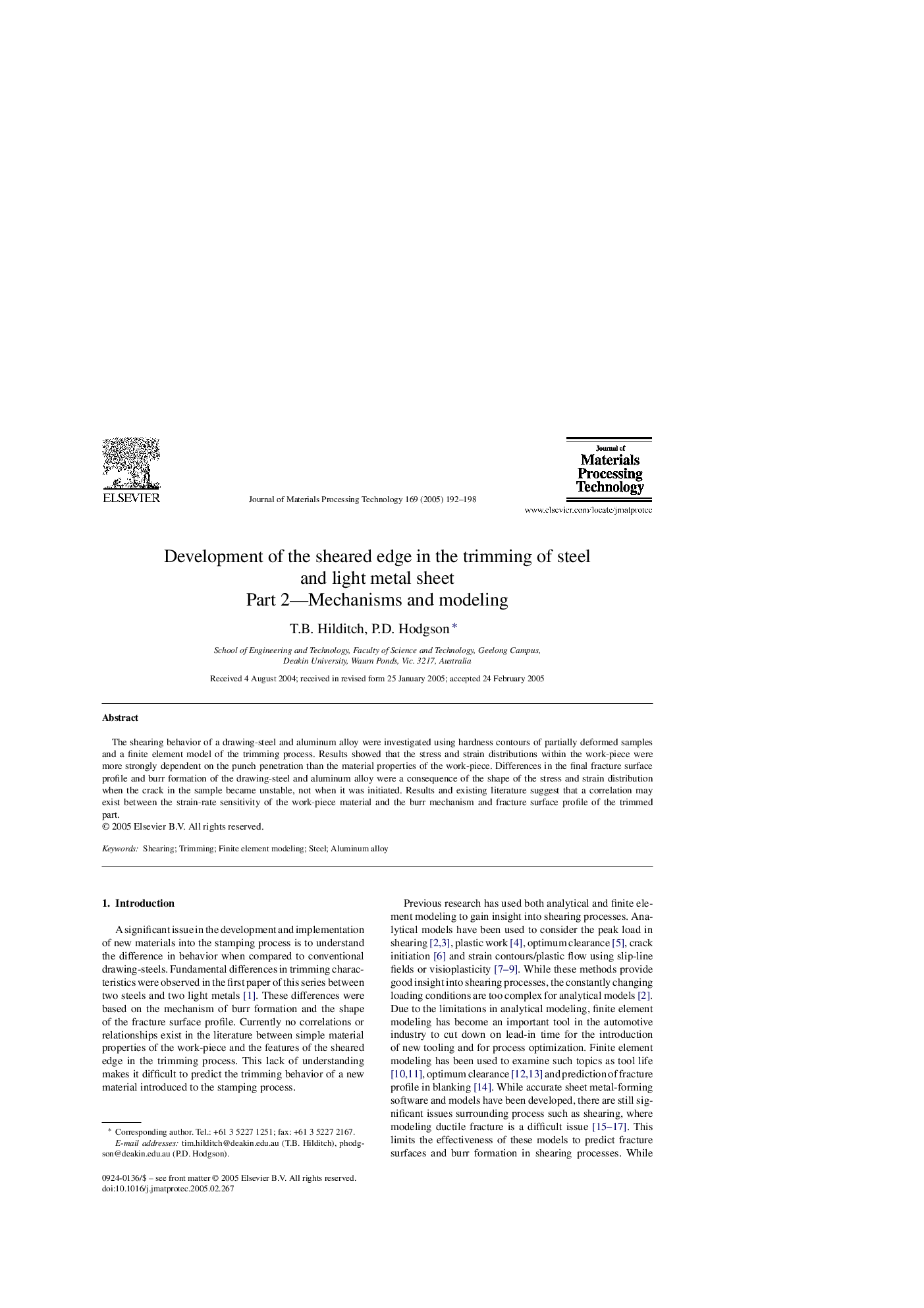| Article ID | Journal | Published Year | Pages | File Type |
|---|---|---|---|---|
| 10418362 | Journal of Materials Processing Technology | 2005 | 7 Pages |
Abstract
The shearing behavior of a drawing-steel and aluminum alloy were investigated using hardness contours of partially deformed samples and a finite element model of the trimming process. Results showed that the stress and strain distributions within the work-piece were more strongly dependent on the punch penetration than the material properties of the work-piece. Differences in the final fracture surface profile and burr formation of the drawing-steel and aluminum alloy were a consequence of the shape of the stress and strain distribution when the crack in the sample became unstable, not when it was initiated. Results and existing literature suggest that a correlation may exist between the strain-rate sensitivity of the work-piece material and the burr mechanism and fracture surface profile of the trimmed part.
Related Topics
Physical Sciences and Engineering
Engineering
Industrial and Manufacturing Engineering
Authors
T.B. Hilditch, P.D. Hodgson,
